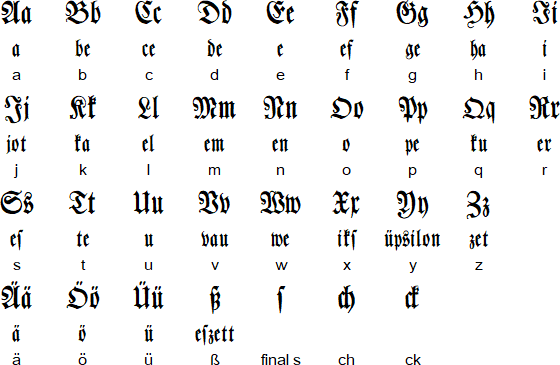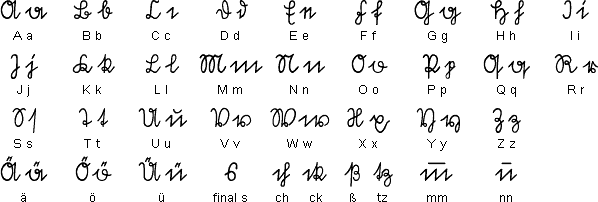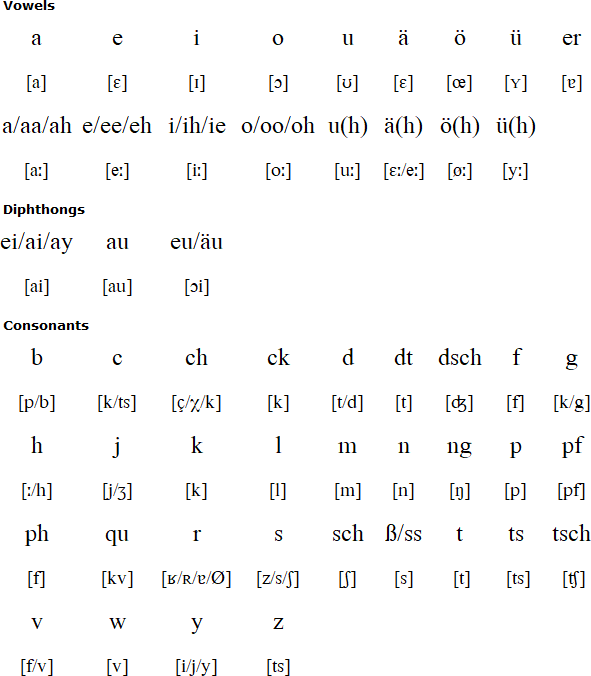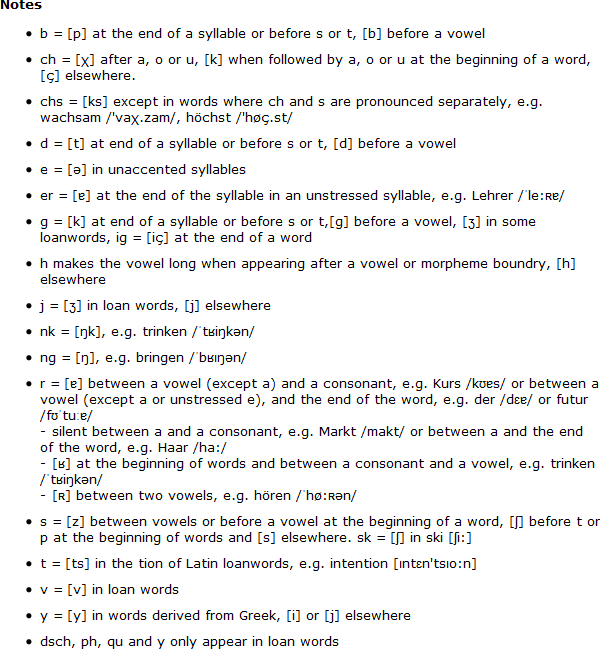The earliest known examples of written German date from the 8th century AD and consist of fragments of an epic poem, the Song of Hildebrand, magical charms and German glosses in Latin manuscripts. A short Latin-German dictionary, the Abrogans, was written during the 760s.
German literature started to take off during the 12th and 13th centuries in the form of poems, epics and romances. Well known examples include the epic Nibelungenlied (the Song of the Nibelungs) and Gottfried von Straßburg's Tristan. The language used is now known as mittelhochdeutsche Dichtersprache (Middle High German poetic language). During this period Latin was gradually replaced by German as the language of official documents.
Varieties of German used in writing
High German (Hochdeutsch)
High German began to emerge as the standard literary language during the 16th century. Martin Luther's translation of the Bible, which he completed in 1534, marks the beginning of this process. The language he used, based partly on spoken German, became the model for written German.Swiss German (Schweizerdeutsch or Schwyzerdütsch)
A variety of German spoken by about 4 million people in Switzerland, occasionally appears in writing in novels, newspapers, personal letters and diaries.Pennsylvania German (Deitsch / Pennsylvania Deitsch / Pennsilfaanisch Deitsch)
A variety of German spoken by about 4 million people in Switzerland, occasionally appears in writing in novels, newspapers, personal letters and diaries.Regional varities of German, or Mundarten, also occasionally appear in writing; mainly in 'folk' literature and comic books such as Asterix.
Written German script styles
Fraktur
Fraktur was used for printed and written German from the 16th century until 1940. The name Fraktur comes from Latin and means "broken script". It is so called because its ornamental twiddly bits (curlicues) break the continuous line of a word. In German it is usually called the deutsche Schrift (German script).Fraktur was also used for a number of other languages, including Finnish, Czech, Swedish, Danish and Norwegian.

Notes
The second lowercase s appears at the ends of syllables, except in the following combinations: ss, st, sp, sh and sch, while the first (ſ) appears everywhere else. The symbol ß (scharfes S or Eszett) is a combination of the long s and z, or a combination of the two types of s: there is some dispute about origin of this symbol. For further details, see: http://en.wikipedia.org/wiki/ß.Sample text in Fraktur

Sütterlin
Sütterlin was created by the Berlin graphic artist L. Sütterlin (1865-1917), who modelled it on the style of handwriting used in the old German Chancery. It was taught in German schools from 1915 to 1941 and is still used by the older generation.
Sample text in Sütterlin

Download a font for Sütterlin (TrueType, 56K)
| A a | B b | C c | D d | E e | F f | G g | H h | I i | J j | K k | L l | M m |
|---|---|---|---|---|---|---|---|---|---|---|---|---|
| a | be | ce | de | e | ef | ge | ha | i | jot | ka | el | em |
| N n | O o | P p | Q q | R r | S s | T t | U u | V v | W w | X x | Y y | Z z |
| en | o | pe | ku | er | es | te | u | vau | we | iks | üpsilon | zet |
German pronunciation


Sample text in German
Alle Menschen sind frei und gleich an Würde und Rechten geboren. Sie sind mit Vernunft und Gewissen begabt und sollen einander im Geist der Brüderlichkeit begegnen.A recording of this text
Translation
All human beings are born free and equal in dignity and rights. They are endowed with reason and conscience and should act towards one another in a spirit of brotherhood.(Article 1 of the Universal Declaration of Human Rights)
Find German Tutors
Links
Information about the German languagehttp://www.lowlands-l.net/anniversary/deutsch-info.php
http://en.wikipedia.org/wiki/German_language
Online German courses
http://www.bbc.co.uk/languages/german/
http://www.deutsch-lernen.com
http://german.about.com/library/anfang/blanfang_inhalt.htm
http://german.about.com
http://learngerman.elanguageschool.net
http://www.deutschakademie.de/online-deutschkurs/english/
http://www.german-online.net
http://www.populearn.com
http://www.deutsched.com
http://www.yesgerman.com/
http://learn-german-easily.com
http://leicht-deutsch-lernen.com
Find German Tutors, Teachers and Lesson Help
Learn German with Rocket German | German learning software
German Electronic talking dictionaries
http://www.ectaco.com










.jpg)
.jpg)
.jpg)





0 comments:
Post a Comment
Note: Only a member of this blog may post a comment.